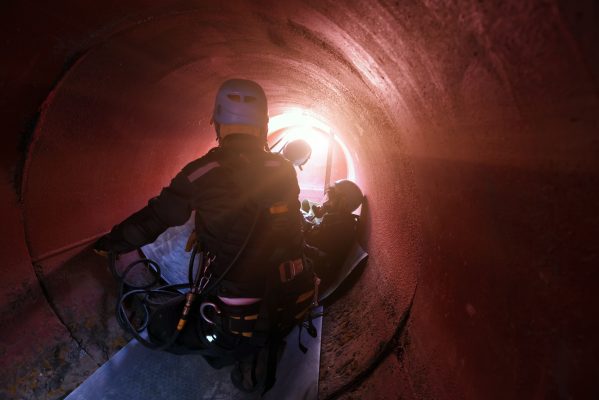
One thing we get asked quite frequently at Nara Training and Assessing is “what is a confined space?” So, in this week’s blog post, we will be giving you a run down on everything you need to know about confined spaces. Once you understand what is considered as a confined space and learn how to identify a confined space, you will know when to comply with the relevant safety regulations.
What is a Confined Space?
A confined space is much more than a small space. Occupational Safety and Health Regulations defines a confined space as an enclosed or partially enclosed space which
- is not intended or designed primarily as a workplace
- is at atmospheric pressure during occupancy; and
- has restricted means for entry and exit
And which either:
- has an atmosphere containing or likely to contain potentially harmful levels of contaminant;
- has or is likely to have an unsafe oxygen level; or
- is a nature or is likely to be of a nature that could contribute to a person in the space being overwhelmed by an unsafe atmosphere or contaminant.
Due to this complex definition, there have been several incidences where supervisors working in a confined space actually failing to identify a confined space and allowing their workers to enter and work in the space without the necessary precautions.
Confined spaces often have poor ventilation which allows hazardous atmospheres to quickly develop, especially if the space is small. The hazards are not always obvious and may change from one entry into the confined space to the next. To ensure work is conducted safely and efficiently, it is vital to have a plan and prepare for the work in advance.
Why Do You Need to Enter a Confined Space?
Now that you know what is considered as a confined space, it is equally important to know why you need to enter a confined space. Although there are many reasons for entering a confined space, here are some common ones:
- Cleaning and removing waste
- Repair work, for example, welding or cutting
- Installing pumps and motors
- Painting, sand blasting or applying surface coatings
- Reading meters, gauges and dials
- Installing, repairing or inspecting telephone, electrical or fibre optic cables
- Tapping, coating or testing steam, water or sewage systems
- Inspecting plant of equipment
- Constructing a confined space, for example an industrial boiler
What Do I Need in Order to Work in a Confined Space?
CONFINED SPACE LICENSE
First and foremost, you need to undergo confined space training with a Registered Training Organization (RTO). This is where we can help you. Nara Training and Assessing is a RTO (4518) that offers both beginner and refresher confined space training courses throughout Western Australia. Course participants will undergo training in:
- Working in confined spaces
- Current legislation and requirements
- Hazard identification and control measures
- Entry permits
- Plan and prepare for work in confined space
- Exit confined space
For further information about the course or to make a booking, please click here.
WORK PERMIT
Once you have a confined space license, the next step is to obtain a work permit to undertake work in the particular space. A Confined Space Entry Permit provides a formal check to ensure all components of a safe system of work are in place before you are authorized to enter the confined space.
It also provides a means of communication between site management, supervisors and those carrying out the work and ensures that the entry to the confined space is authorized and safe to proceed.
According to the Confined Space Code of Practice, the work permit must be completed in writing by a competent person and:
- Specify the confined space to which the permit relates
- Record the names of persons permitted to enter the confined space and the period of time that the work will be carried out
- Set out risk control measures based on the risk assessment and
- Contain space for an acknowledgement that work in the confined space has been completed and all persons have left the space
A confined space permit should include all information required to perform work safely such as:
- Location, description and duration of work to be done
- Hazards that may be encountered
- Atmospheric test and monitoring requirements and results
- Authorization for work to be done
- Isolation, lock-out and tagging processes
- Hazard control measures (for example signs, barriers and ventilation and purging)
- Personal protective equipment and clothing needed for the job
- Size of work crew
- Stand-by personnel and emergency response and rescue arrangements
- Other requirements determined by a risk assessment and in accordance with the code of practice and AS2865
Once issued, you need to check that the details in the work permit match the job including hazards, control measures and equipment. Changes to work conditions or identifying new hazards can mean the permit has to be cancelled before the work has been finished. The permit may have to be re-issued to include the latest information.
One thing to note is that confined space permits will vary from company to company in terms of layout but the information will be more or less the same. Always remember to make sure that you follow the processes outlined for your workplace and if you are not sure about anything, you should ask for help.
Information for Businesses
If your business requires workers to enter or work in confined spaces, it is imperative to invest in confined space training not only for the safety of your workers but also your business. Click here to learn 6 Reasons Why Your Business Needs Confined Space Training. To find out how we can help your business, please visit our website or call 1800 813 339.
